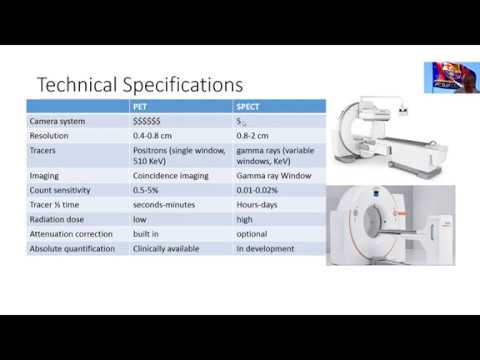SPECT and PET Scanners: Illuminating the Future of Medicine
The field of nuclear medicine has witnessed remarkable advancements in recent years, transforming the way we diagnose and treat a wide range of medical conditions. Among the many groundbreaking innovations in this field, SPECT and PET scanners have emerged as indispensable tools for medical professionals. In this blog post, we will explore the world of SPECT (Single Photon Emission Computed Tomography) and PET (Positron Emission Tomography) scanners, shedding light on how these incredible devices are reshaping the landscape of medical imaging and diagnosis.
Nuclear Medicine: A Glimpse into the Future
Nuclear medicine is a specialized branch of medical imaging that utilizes small amounts of radioactive materials, known as radiotracers, to diagnose and treat various diseases. Unlike other imaging techniques such as X-rays or MRIs, nuclear medicine focuses on the functional processes within the body, allowing healthcare providers to gain insights at the molecular and cellular levels. SPECT and PET scanners are two key players in this exciting field, offering unique capabilities that have revolutionized patient care.
The Power of SPECT Scanners
SPECT scanners, short for Single Photon Emission Computed Tomography, are a critical component of nuclear medicine. These devices work by detecting gamma rays emitted by a radiotracer injected into the patient’s body. By capturing the gamma ray emissions from multiple angles, SPECT scanners can create detailed 3D images of the distribution of radiotracers in the body. This information is invaluable for diagnosing conditions such as heart disease, bone disorders, and various types of cancer.
Applications of SPECT Scanners
Cardiology: SPECT scans play a crucial role in assessing blood flow to the heart muscle, helping cardiologists identify areas of reduced blood flow, which may indicate coronary artery disease.
Oncology: SPECT imaging is used to locate and characterize tumors, evaluate the spread of cancer, and monitor the effectiveness of cancer treatments.
Neurology: In neurology, SPECT scans aid in the evaluation of conditions like epilepsy, Alzheimer’s disease, and stroke, providing insights into cerebral blood flow and brain function.
Bone Imaging: SPECT scanners are used to detect bone abnormalities, fractures, and infections by visualizing the bone’s metabolic activity.
Unleashing the Potential of PET Scanners
PET scanners, or Positron Emission Tomography scanners, are another essential tool in the nuclear medicine arsenal. These scanners use radiotracers that emit positrons (positively charged electrons), which interact with electrons in the body, resulting in the emission of gamma rays. PET scanners detect these gamma rays to create detailed images of the distribution of radiotracers within the body. What sets PET scans apart is their ability to measure metabolic and biochemical processes, offering critical information about how tissues and organs function.
Applications of PET Scanners
Oncology: PET scans are particularly effective in identifying cancerous tumors, determining their stage, and evaluating the effectiveness of cancer treatments. They can also detect cancer recurrence at an early stage.
Neurology: In the field of neurology, PET scans provide insights into brain disorders, such as Alzheimer’s disease and Parkinson’s disease. They help pinpoint abnormal metabolic activity, aiding in accurate diagnosis and treatment planning.
Cardiology: PET scanners are used to assess blood flow and the overall function of the heart. This is especially useful in cases of myocardial infarction and coronary artery disease.
Infectious Diseases: PET scans can help identify areas of infection or inflammation in the body, which is invaluable for diagnosing conditions such as osteomyelitis and endocarditis.
The SPECT-PET Synergy
While SPECT and PET scanners each have their unique strengths, there are cases where using them in combination can provide even more comprehensive information. This approach, known as SPECT/CT and PET/CT, combines the anatomical information obtained from computed tomography (CT) with the functional data from SPECT or PET scans. This fusion of data can be a game-changer in various clinical scenarios.
Advantages of SPECT/CT and PET/CT
Improved Localization: The combination of functional and anatomical data allows for precise localization of abnormalities, making it easier for healthcare providers to plan interventions.
Enhanced Accuracy: SPECT/CT and PET/CT help eliminate false positives and false negatives, improving the accuracy of diagnosis and treatment planning.
Reduced Radiation Exposure: By merging two types of scans into one, patients are exposed to less radiation, enhancing safety while maintaining diagnostic efficacy.
The Future of SPECT and PET Scanners
As technology continues to evolve, SPECT and PET scanners are becoming more sophisticated and versatile. Emerging innovations in radiotracer development and imaging technology are enhancing the capabilities of these scanners. Here are some exciting developments on the horizon:
New Radiotracers: Ongoing research is leading to the development of novel radiotracers that target specific biomarkers associated with various diseases. These tracers will provide even more precise and personalized diagnostic information.
Quantitative Imaging: The ability to quantitatively measure the concentration of radiotracers in the body is becoming increasingly important. This will aid in more accurate disease assessment and treatment monitoring.
Artificial Intelligence Integration: AI is being integrated into the interpretation of SPECT and PET scans. Machine learning algorithms can assist in the detection of subtle abnormalities and offer faster, more reliable analysis of complex data.
Reduced Radiation Doses: Ongoing efforts are focused on reducing the radiation exposure associated with these scans, making them safer for patients while maintaining their diagnostic value.
Conclusion
SPECT and PET scanners are at the forefront of nuclear medicine, offering healthcare providers invaluable insights into the inner workings of the human body. With applications spanning cardiology, oncology, neurology, and beyond, these imaging techniques are essential tools in the diagnosis and treatment of a wide range of medical conditions. As technology continues to advance, the future of SPECT and PET scanners promises even greater precision, safety, and effectiveness in patient care. These remarkable devices are illuminating the path to better health and medical outcomes, one scan at a time.



